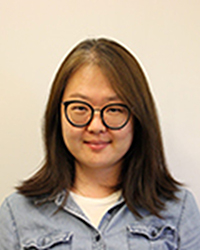Modeling of PFAS Mixture Toxicity
Principal Investigator(s): Dr. Marisol Sepúlveda

Researchers
 Youn Jeong Choi, Analytical Chemist
Youn Jeong Choi, Analytical Chemist
Purdue Agronomy

Tyler Hoskins, Research Assistant Faculty
Purdue FNR

Jason Hoverman, Professor
Purdue FNR

Linda Lee, Professor
Purdue Environmental and Ecological Engineering & Agronomy

S. Kar, Professor at Dorothy & George Hennings College of Science
Kean University, NJ

J.D. Gantz, Morris & Ann Henry Odyssey Assistant Professor of Biology
Hendrix College, Arizona

Marisol Sepúlveda, Professor and Associate Head of Research
Purdue Forestry & Natural Resources
Research Objectives
Environmental exposure to per and polyfluoroalkyl substances (PFAS) occurs as mixtures. Importantly, the bioaccumulation potential and toxicity of a particular mixture is driven by the number of halogenated carbons and functional groups present. PFAS are also highly proteinophilic and known to bind to proteins. Hemoglobins (Hbs) are key proteins responsible for transporting oxygen to tissues and studies show PFAS can bind with Hb interfering with oxygen transport. Chironomids (midges) are highly sensitive to PFAS and >95% of all their hemolymph proteins are Hbs. Using a combination of in silico, in vitro, and in vivo tools, we will test the overarching hypothesis that binding of PFAS to Hbs is a tractable and sensitive physiological signal for predicting the toxicity of PFAS mixtures.
- Develop and parameterize mechanistic toxicity in silico models to determine whether the toxicity of PFAS mixtures deviates from additivity
- Inform and validate in silico models using PFAS and Hb binding affinity data
- Inform and validate in silico models using in vivo toxicity tests




